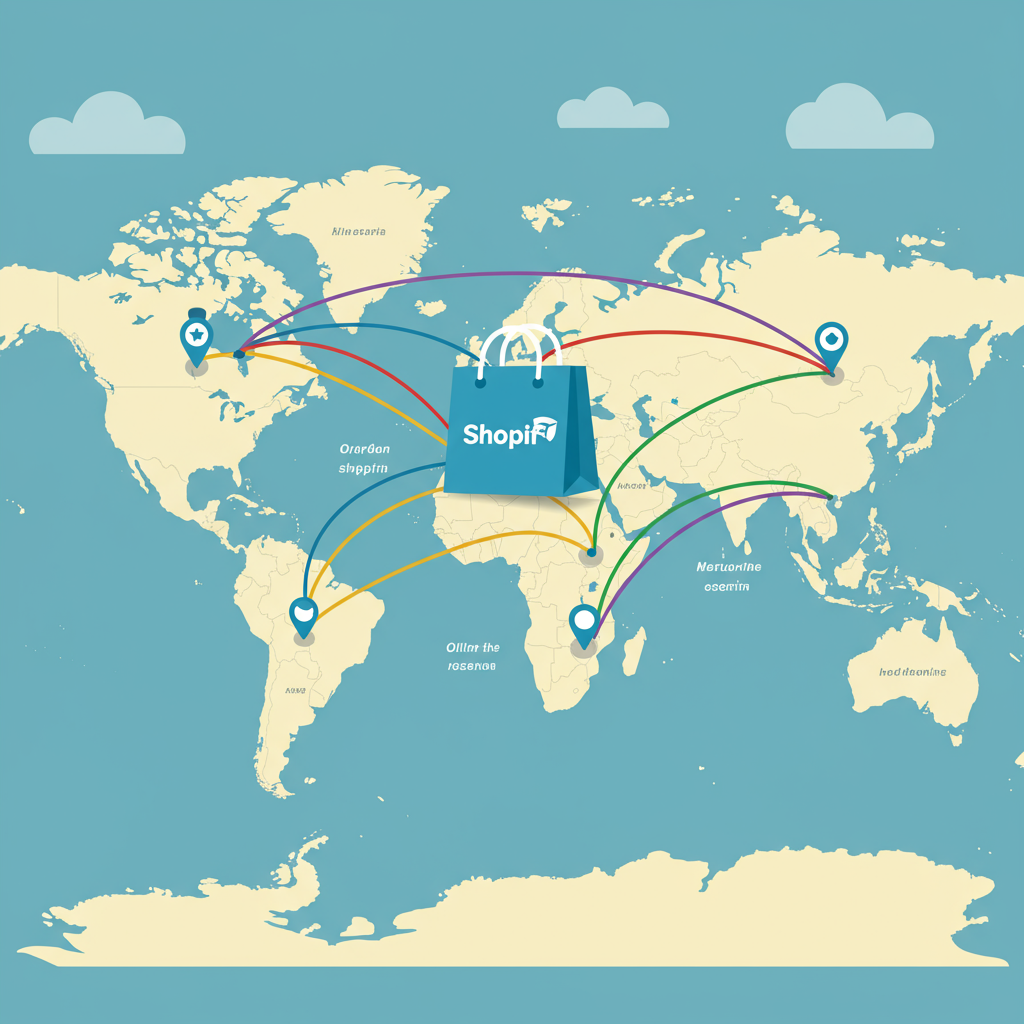Unlocking new markets and delighting customers worldwide with effective shipping solutions.
As a Shopify merchant, I’ve always been fascinated by the idea of reaching customers beyond my local borders. The global marketplace offers immense opportunities for growth, but it also comes with its unique set of challenges, especially when it comes to shipping.
I’ve learned that expanding internationally isn’t just about translating your website; it’s fundamentally about getting your products into the hands of customers efficiently and affordably, no matter where they are.
This journey has taught me that a well-thought-out international shipping strategy is not just a logistical necessity, but a powerful competitive advantage.
It builds trust, reduces cart abandonment, and ultimately, drives sales from a much larger audience.
So, let me share with you the key strategies and considerations I’ve adopted to successfully ship my Shopify products to international customers.
First and foremost, I always begin with thorough market research. It’s crucial to identify which countries show demand for your products and, equally important, which ones have manageable import regulations and shipping costs.
Understanding the local customs, duties, and taxes of your target markets is paramount. This knowledge helps you avoid unexpected costs for your customers and potential delays at customs.
Next, I focus on calculating and displaying shipping costs accurately. Transparency is key here. Customers hate hidden fees, and unexpected charges at checkout are a major reason for abandoned carts.
I’ve found that offering clear, upfront shipping costs, or even estimated costs, can significantly improve conversion rates.
One of the biggest decisions I face is whether to handle customs duties and taxes myself (DDP – Delivery Duty Paid) or leave them to the customer (DDU – Delivery Duty Unpaid).
With DDU, the customer is responsible for paying any duties and taxes upon arrival. While this simplifies things for me, it can lead to a poor customer experience if they’re hit with unexpected fees.
Conversely, DDP means I collect these fees at checkout and handle the payment to customs. This provides a seamless experience for the customer, but it requires more administrative effort and a deeper understanding of international tax laws.
I generally lean towards DDP where feasible, as it significantly enhances customer satisfaction and reduces post-purchase issues.
Choosing the right shipping carriers is another critical step. I evaluate major international carriers like DHL, FedEx, UPS, and national postal services based on their reliability, speed, tracking capabilities, and cost-effectiveness for different regions.
Sometimes, a combination of carriers works best – an express service for urgent orders and a more economical option for standard deliveries.
Proper packaging is often overlooked but is vital for international shipping. My products need to withstand longer transit times and more handling.
I invest in durable packaging materials to prevent damage and ensure items arrive in perfect condition, which is crucial for customer satisfaction.
Accurate labeling and documentation are non-negotiable. Every international shipment requires specific customs forms, commercial invoices, and proper labeling with recipient and sender information.
I double-check these documents meticulously to prevent delays or seizure at customs.
Establishing a clear international returns and exchanges policy is also essential. Customers need to know what to expect if a product doesn’t meet their expectations or arrives damaged.
I make sure my policy is easily accessible on my Shopify store and outlines the process, who covers return shipping costs, and how refunds or exchanges are handled.
Excellent customer service is paramount. I ensure my support team is equipped to answer questions about international shipping, tracking, and customs.
Proactive communication about shipping status and potential delays builds trust and manages customer expectations effectively.
On the Shopify platform itself, I leverage shipping zones and profiles to manage my international rates. This allows me to set different shipping rules and prices for various countries or regions.
I also explore Shopify’s built-in shipping features, and for more complex needs, I consider third-party shipping apps that integrate seamlessly with Shopify to offer real-time carrier rates, print labels, and manage customs documentation.
Implementing a currency converter app on my Shopify store is a must. It allows international customers to view prices in their local currency, making their shopping experience much more comfortable and transparent.
Similarly, I consider language translation apps or even dedicated international store versions to cater to non-English speaking audiences, further enhancing their shopping journey.
When it comes to actual shipping strategies, I’ve experimented with several approaches. Flat-rate international shipping can simplify things for customers, but I ensure the rate covers my average costs without overcharging or undercharging.
Offering free international shipping, perhaps above a certain order value, can be a powerful marketing tool, but I always factor the shipping cost into my product pricing to maintain profitability.
Calculated shipping rates, pulled directly from carriers based on package weight, dimensions, and destination, offer the most accuracy and fairness to both me and the customer.
Sometimes, a hybrid approach works best – a flat rate for smaller, lighter items, and calculated rates for heavier or more valuable goods.
For truly global scale, I’ve also looked into using international fulfillment centers or 3PLs (third-party logistics providers). These partners can store my inventory closer to my international customers, significantly reducing shipping times and costs.
Expanding your Shopify store internationally is a journey that requires careful planning and continuous optimization. By focusing on transparency, customer experience, and leveraging the right tools, you can unlock incredible growth opportunities.
It’s about making the world feel a little smaller for your customers, one successful shipment at a time. What do you think about this article? I’d love to hear your thoughts and experiences with international shipping!
Embrace the global market, and watch your Shopify business thrive beyond borders.






